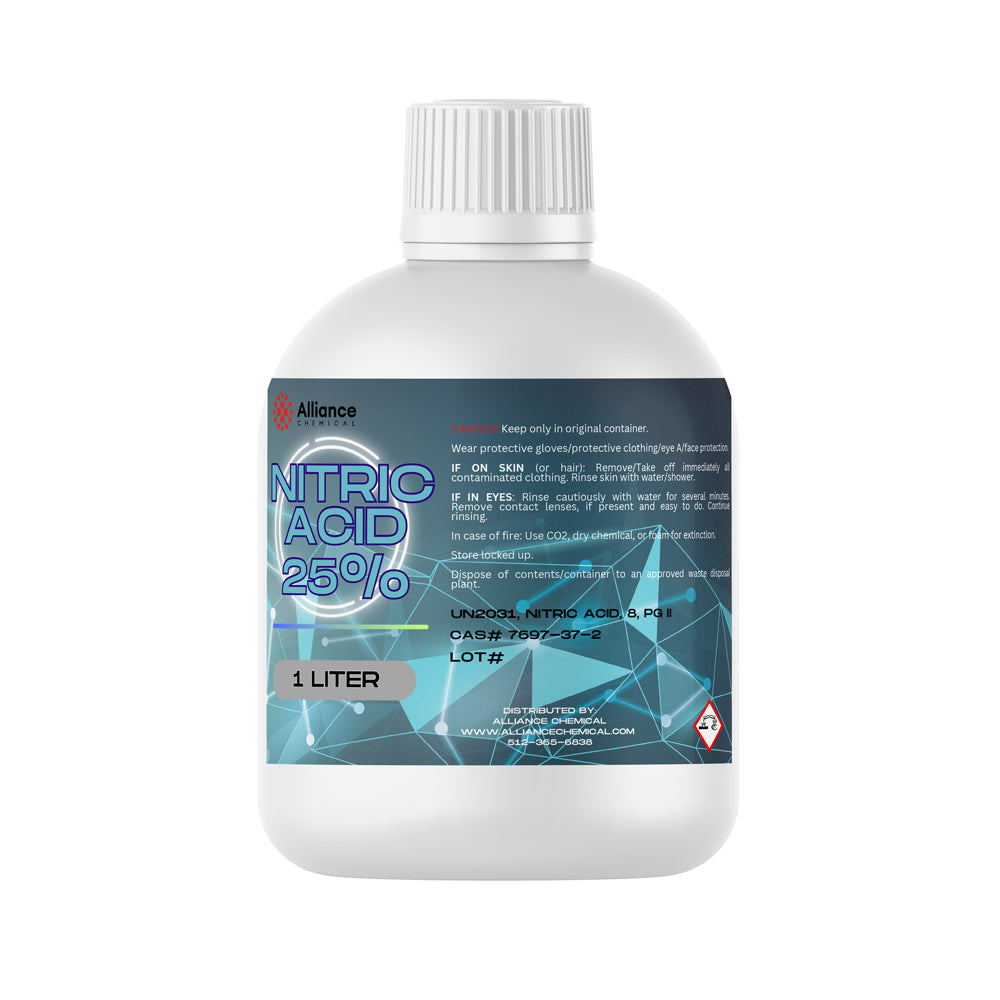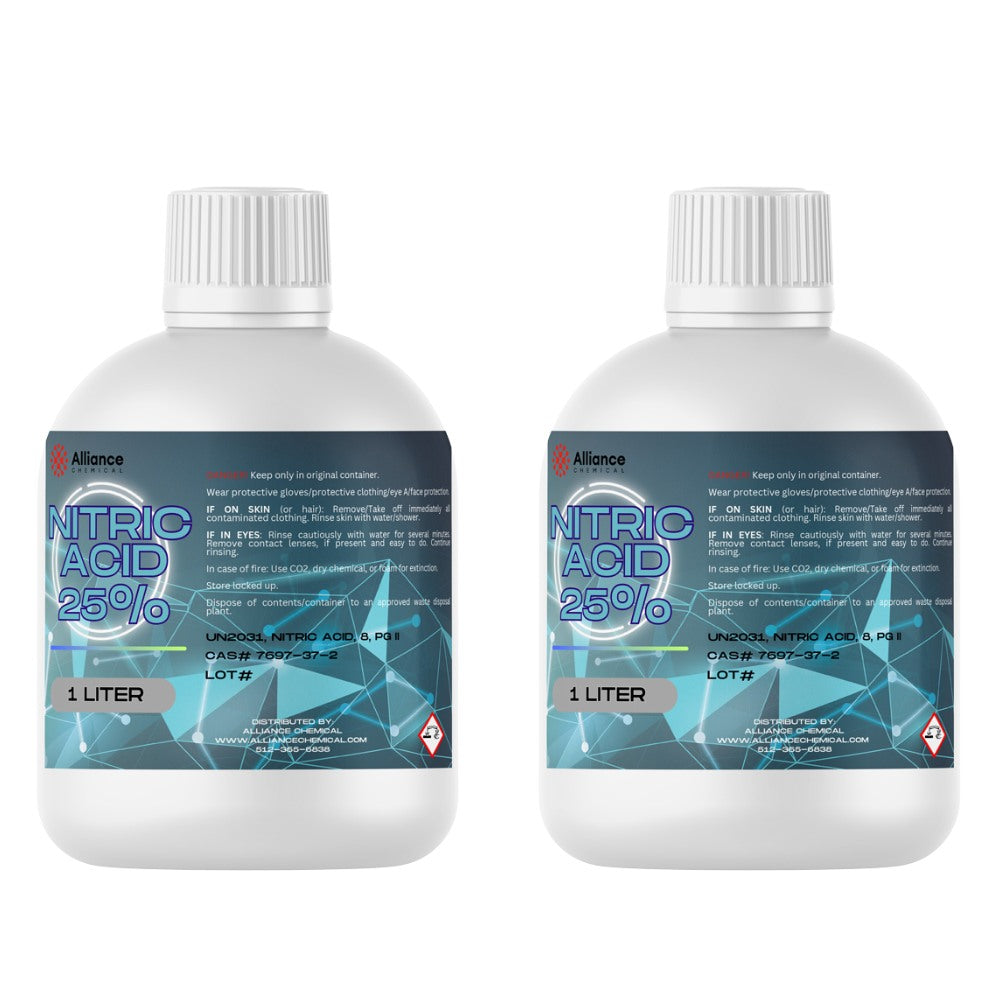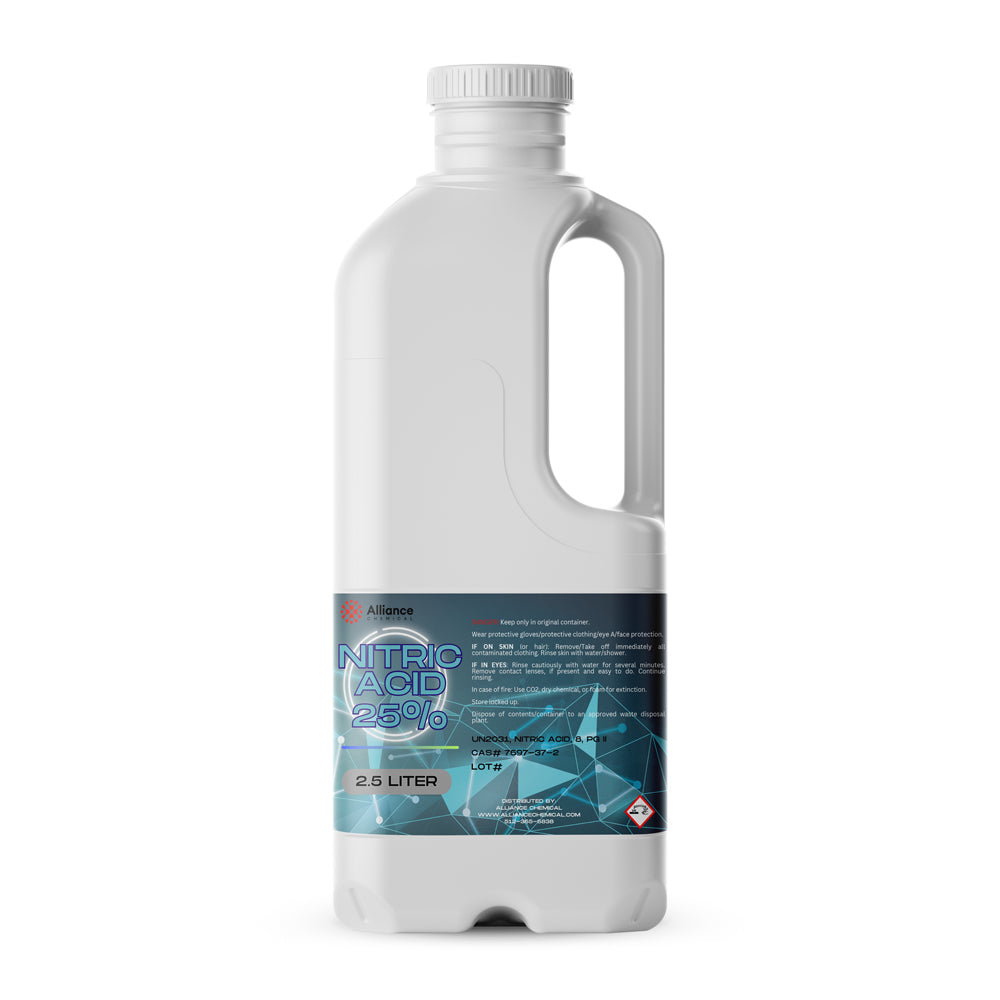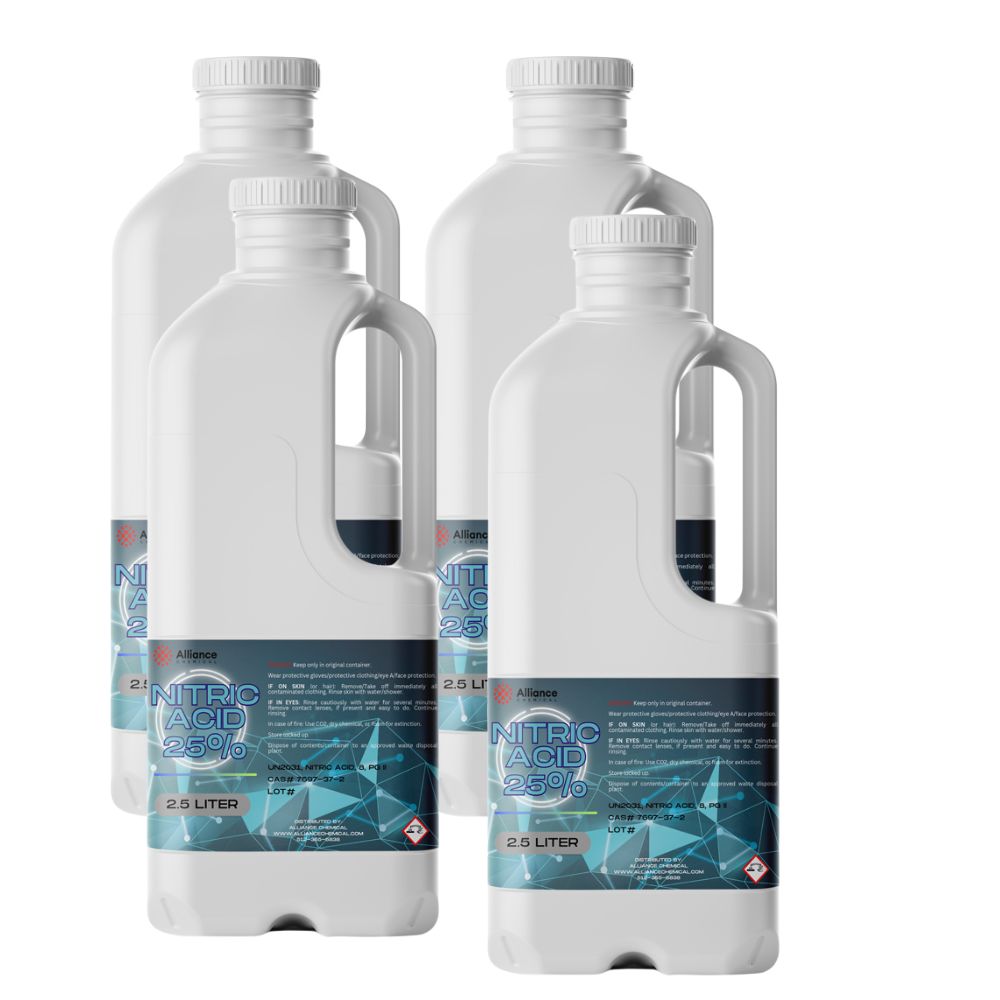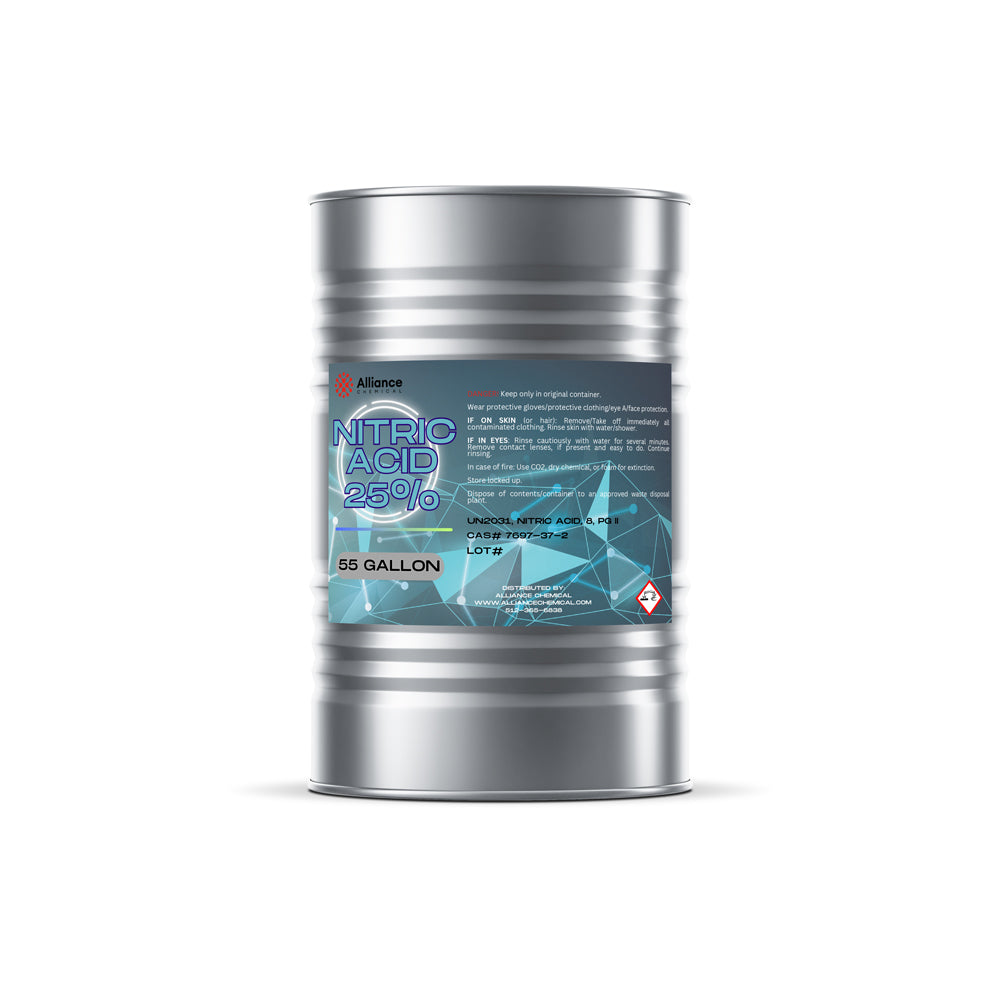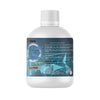Ask a question
Product Overview
Nitric Acid 25% is a Technical Grade aqueous solution of nitric acid (HNO3), historically known as Aqua Fortis. This formulation provides the strong oxidizing capabilities required for industrial applications while offering improved handling characteristics compared to fuming concentrations. It is widely used in metal finishing, chemical synthesis, and industrial water treatment processes.
Alliance Chemical supplies Nitric Acid 25% with tight specification bands to ensure reliable titratable acidity and predictable performance in process streams. It serves as a critical agent for etching steel and brass, passivating stainless steel, and adjusting pH in wastewater systems. The solution is strictly manufactured to minimize impurities, supporting consistent results in manufacturing and laboratory environments.
Key Properties
- Assay (HNO3): 24–26% (Typical 25%)
- Grade: Technical
- Appearance: Clear, colorless to slightly yellow liquid
- Specific Gravity (20°C): 1.10–1.12
- Molecular Weight: 63.01 g/mol
- Chloride (ppm): Max 20
- Heavy Metals (as Pb): Max 0.5 ppm
- Iron (Fe): Max 0.2 ppm
Common Applications
- Metal Finishing & Etching: Used extensively for etching metals (copper, brass, bronze) and passivating stainless steel to prevent corrosion.
- Industrial pH Control: Effective agent for neutralizing alkaline streams in wastewater treatment and process water.
- Chemical Manufacturing: Acts as a precursor in nitrate synthesis and fertilizer production.
- Cleaning Agent: Removes mineral deposits and impurities from industrial equipment and masonry.
- Laboratory Reagent: Utilized in analytical chemistry for elemental analysis and digestion procedures.
Safety & Handling
Hazmat Classification: UN 2031, Nitric Acid, Class 8, Packing Group II.
Nitric Acid 25% is a corrosive liquid and a strong oxidizer. It must be handled with full Personal Protective Equipment (PPE), including acid-resistant gloves, chemical splash goggles, and a face shield. Store in a cool, well-ventilated area away from incompatible materials such as organic compounds, bases, and reducing agents. Ensure storage containers (HDPE or glass) are tightly sealed to prevent vapor escape. Refer to the Safety Data Sheet (SDS) for detailed emergency and disposal protocols.
Benefits
Technical Grade Quality: Low impurity profile for consistent industrial processing.
Versatile Oxidizer: Effective for both surface preparation and chemical synthesis.
Scalable Packaging: Available in sizes ranging from 1 Liter bottles to 55 Gallon drums.
Related Products
| Property | Value |
|---|---|
| Molecular Weight | 63.01 g/mol |
| Formula | HNO3 |
| Assay | 25% |
| Grade | Reagent |
| Form | Liquid |
| Solubility | Soluble in water, alcohol, and other polar solvents |
| Appearance | Colorless to slightly yellow, fuming liquid |
| Melting Point | -42 °C |
| Boiling Point | 83 °C |
| Specific Gravity | 1.2 |
| Industry | Industrial, Environmental, Wastewater |
KF5-DDG-MWR
$20.25
Unit price
Compare Products
| Price |
|---|
| SKU |
| Rating |
| Discount |
| Vendor |
| Tags |
| Weight |
| Stock |
| Short Description |

